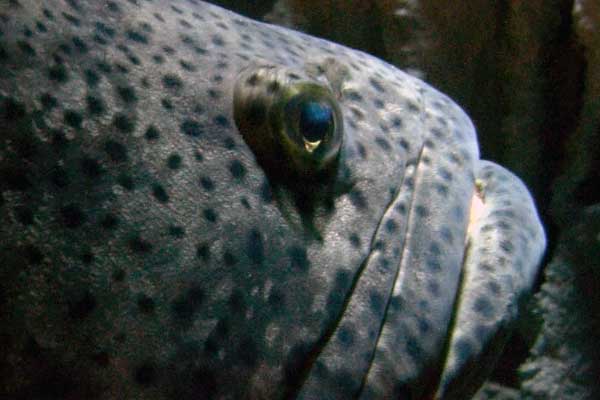FUN FACT ONE
Groupers have a very interesting change in lifestyle: As they get older, they change from being a female to a male! As groupers grow, they are first female when they reach sexual maturity. After a few years, the female will transform into a male. Scientists believe that this transformation is triggered when the grouper is the right age, they are in a group of animals that are about to spawn and there are fewer males in the population. Once this change happens, it’s permanent.
What’s the advantage of having this life cycle? The energy-consuming task of growing eggs is left to the younger fish that are healthy and strong while the larger fish that have proven their ability to survive can fertilize the eggs as males. It's a good way to keep populations strong through genetics!
Groupers gather together in spawning groups once they are ready to mate. These groups vary in number, size, and location. Once together, the females lay eggs that float to the surface after being fertilized. The eggs then float with ocean currents for 40 to 60 days and arrive at the nursery grounds just as the tiny groupers hatch out. These small groupers swim down to the bottom of the ocean and hide in sea grasses and mangroves until they get larger, remaining in the nursery area for 4 to 6 years. Once they are large enough, the groupers then leave the nursery area and then move offshore to join adult populations in coral reefs.

Take a closer look: Visitors can watch neon gobies cleaning the groupers in this video.
FUN FACT TWO
Watch the groupers in the Blue Hole exhibit and you may see them getting a bath! Groupers rely on small cleaner fish to stay free of parasites and other itchy conditions. The small one-inch neon goby (look for the small black and neon blue stripes) is the fish for the job, removing loose scales and parasites from the skin and gills of the groupers. The groupers get clean while the gobies get a snack and protection.
Groupers are the dominant, top-level predatory fish on many coral reefs and help maintain balance among fish populations and increase the biodiversity in an area. However, these groupers face many challenges, including the destruction of mangrove nursery habitats and increased human activity along coastlines. The chief concern for the goliath grouper? Overfishing. These fish are caught as food but is hugely impacted by overfishing because of their reproductive behavior: when they gather in the mating groups, fishermen remove the largest groupers from the population. As groupers reproduce slowly, this practice leads to rapid decline. It’s estimated that the species has declined by 80% in just 40 years, causing them to be considered a critically endangered species. Though there are regulations in the USA, Caribbean and Brazil prohibiting fishing, particularly in areas of marine preserve areas which offer protection for groupers during their mating season, there is still concern that fishing and poaching in other areas continues, making the future of the goliath grouper uncertain.
Learn how you can make smart seafood choices to protect the oceans and animals like the goliath grouper here. Watch the groupers patrol their blue hole home here. And learn more about these

0 comments:
Post a Comment